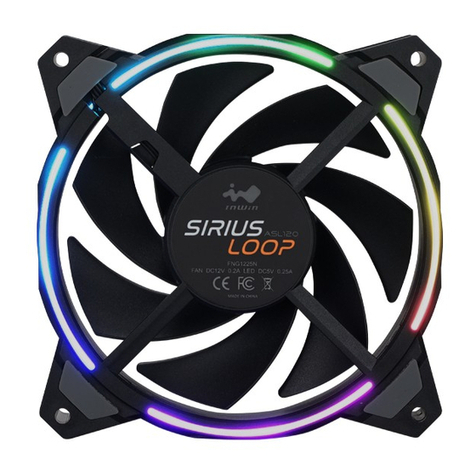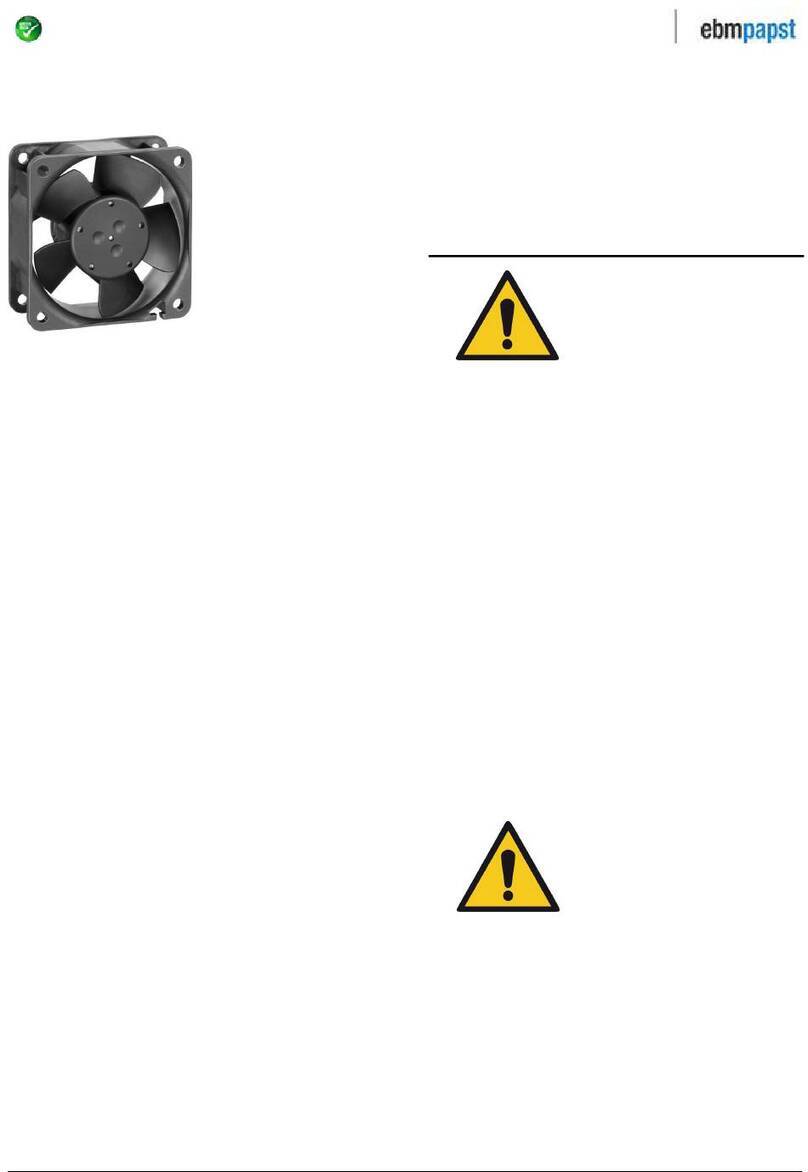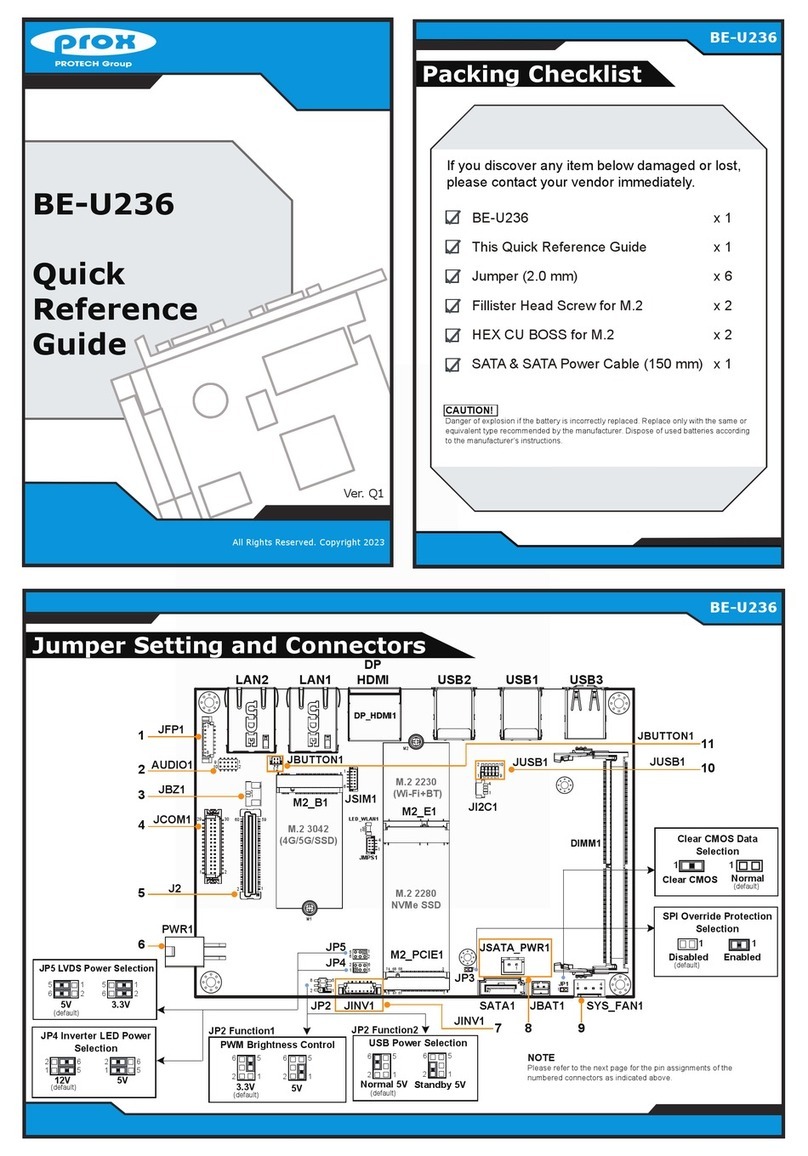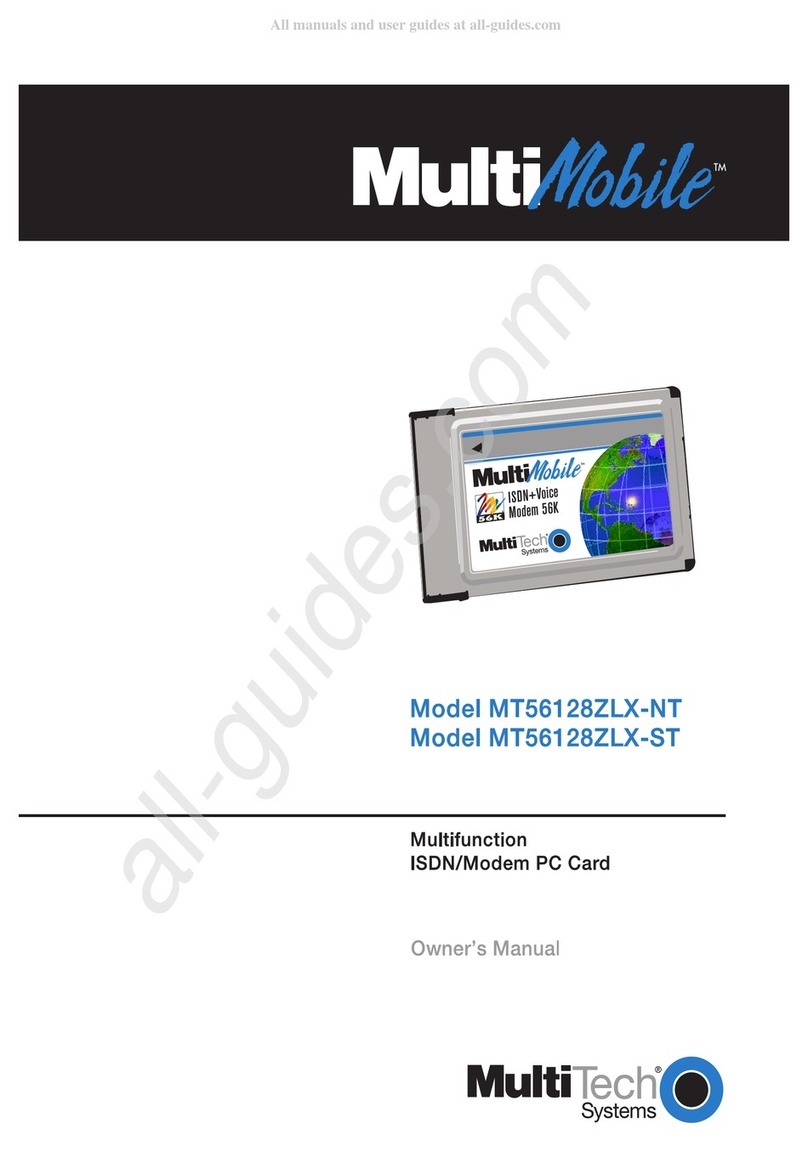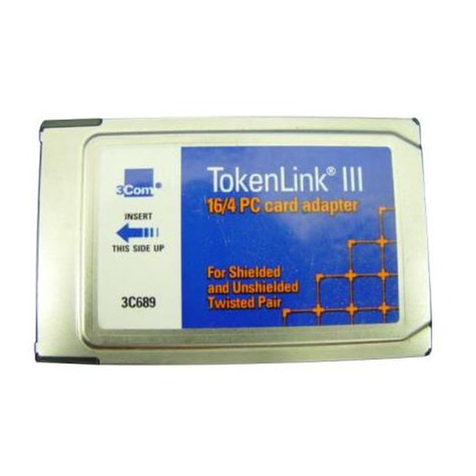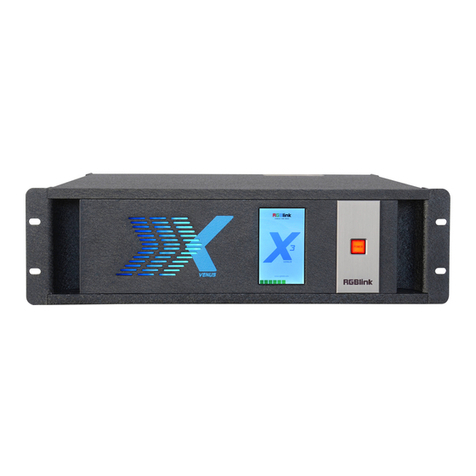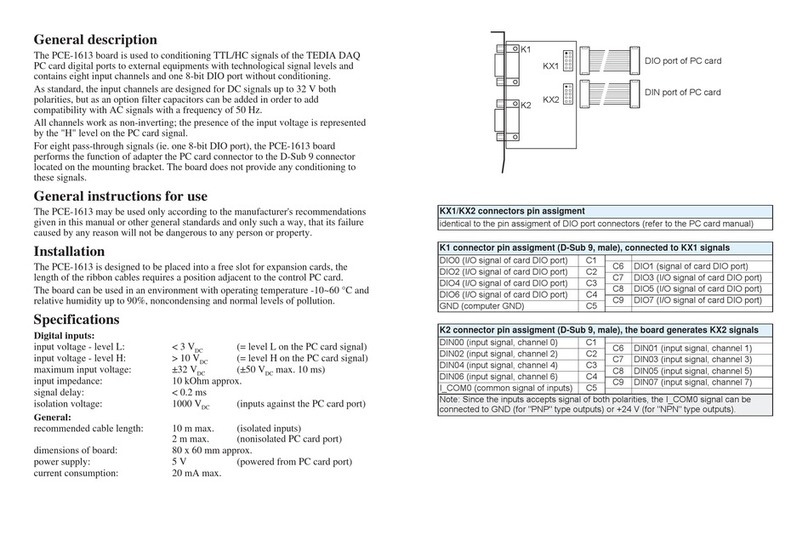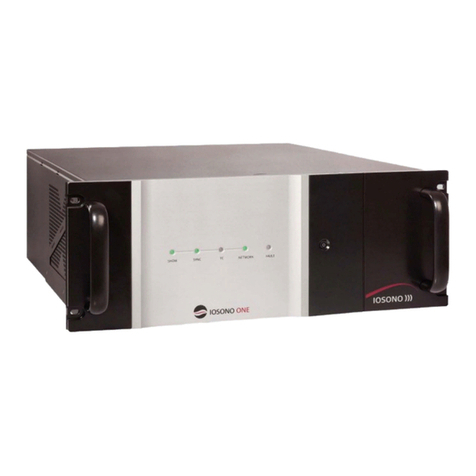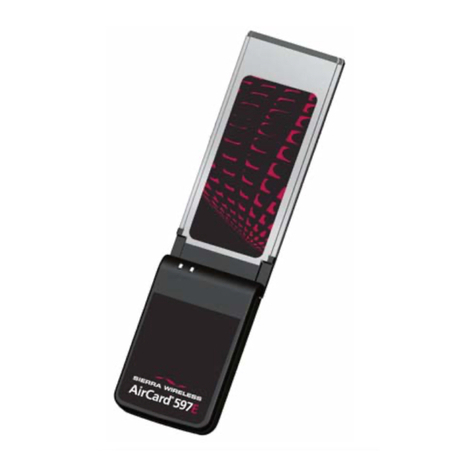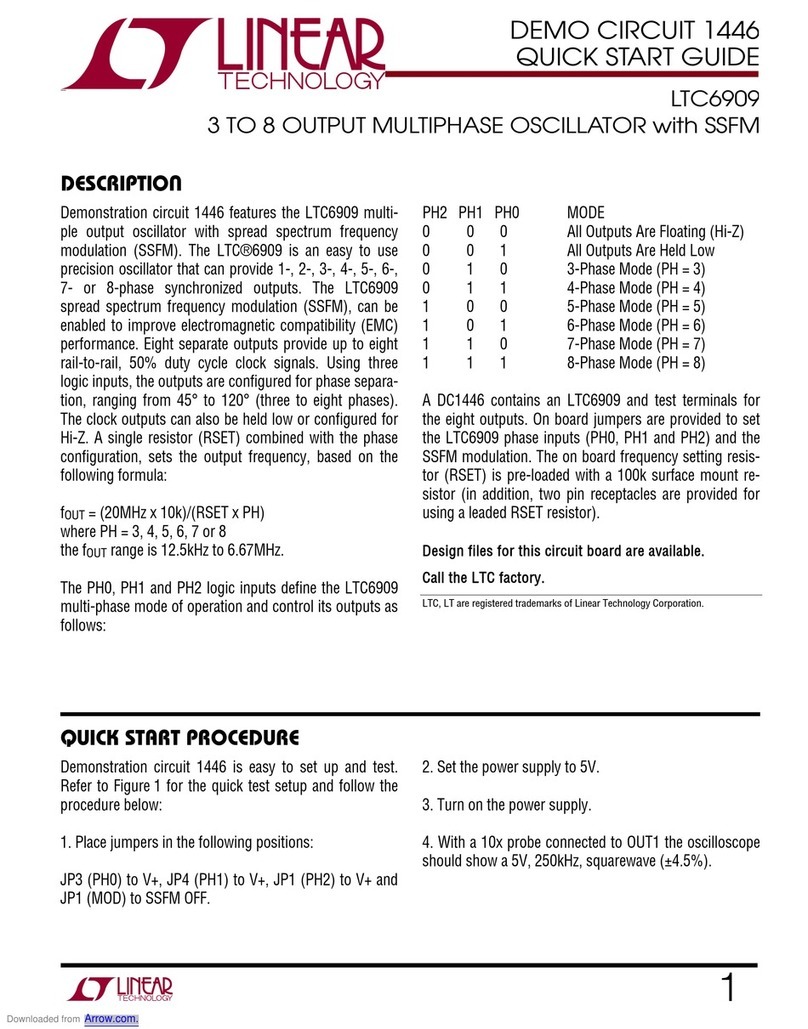Euresys Picolo.net HD1 User manual

Picolo.net HD1
REFERENCE MANUAL
© EURESYS S.A. 2021 - Document D304ET-Reference-Picolo.net_HD1-2.7.3.3038built on 2021-11-23

2
This documentation is provided with Picolo.net HD1 2.7.3 (doc build 3038).
www.euresys.com
This documentation is subject to the General Terms and Conditions stated on the website of EURESYS S.A. and
available on the webpage https://www.euresys.com/en/Menu-Legal/Terms-conditions. The article 10 (Limitations of
Liability and Disclaimers) and article 12 (Intellectual Property Rights) are more specifically applicable.
Picolo.net HD1 Reference Manual

3
Contents
PART I : THE ONVIF SERVICES 4
1. The ONVIF Device Service 5
2. The ONVIF Media Service 6
3. The ONVIF Recording Service 7
4. The ONVIF Event Service 8
5. The ONVIF PTZ Service 9
6. The ONVIF Device IO Service 10
PART II : THE PROPRIETARY SERVICES 11
1. The Proprietary Device Service 12
2. The Proprietary Media Service 13
3. The Proprietary Recording Service 14
4. The Proprietary PTZ Service 15
5. The Proprietary Device IO Service 16
PART III : THE CUSTOM SERVICES 17
1. The ERSP - Euresys Remote Serial Protocol 18
Picolo.net HD1 Reference Manual

PART I
THE ONVIF SERVICES

5
1. The ONVIF Device Service
See also: "The Proprietary Device Service" on page 12 |Using the Device Service
The ONVIF device service is the entry point to all other services provided by your device.
You can easily:
□List the capabilities provided by your device.
□Configure the network settings.
□Manage the system: get device info, start backup, set and get the date and the time...
□Manage the device security configuration: access policy, user credentials, certificates...
Mandatory network capabilities
□IPv4 with static IP configuration
□IPv4 with dynamic IP configuration (DHCP)
Mandatory discovery capabilities
□Target service role (WS-Discovery) on port 80
□Discoverable and non-discoverable modes
□Management of the messages "Hello", "Status changes", "Probe and Resolve" and "Bye"
□Scopes
Mandatory system capabilities
□List of supported ONVIF versions: 1.0 and 1.02
□System support information
Mandatory security capabilities
□Access security policy: "Administrator", "Operator", "User" and "Anonymous"
□Default access policy
Picolo.net HD1 Reference Manual PART I The ONVIF Services

6
2. The ONVIF Media Service
See also: "The Proprietary Media Service" on page 13 |Using the Media Service
The ONVIF media service provides functions to configure the streaming properties of the media
streams.
You can easily:
□Configure the ONVIF Media Profiles.
□Configure the video sources and the video encoders.
□Configure the audio sources and the audio encoders.
□Configure the metadata streams.
□Request the stream URI.
□Configure the overlays.
Mandatory codec capabilities
□JPEG video encoding - QVGA resolution
□G.711 µ-law audio encoding
□JPEG video encoding - Other than QVGA resolution
□H.264 video encoding
Mandatory streaming capabilities
□RTP / RTCP
□RTP over UDP - Unicast
□RTP interleaved in RTSP over HTTP
□RTP interleaved in RTSP over HTTPS
□RTP payloads for the formats supported by the device
□RTP metadata payload
□RTSP Port 554 as default session description using SDP
□RTSP Metadata Stream Description
Picolo.net HD1 Reference Manual PART I The ONVIF Services

7
3. The ONVIF Recording Service
See also: "The Proprietary Recording Service" on page 14 |Using the Recording Service
The ONVIF recording service provides function to interact with the network storage devices and
cameras with embedded storage.
You can easily:
□Configure the local media profile to record (on the attached USB media).
□Start and stop the recording job.
The WSDL filename is "recording.wsdl".
As of version 2.6, Picolo.net HD1 provides a limited implementation of the ONVIF recording
services with only one pre-existing recording job and one pre-existing recording using a local
media profile. Picolo.net HD1 does not generate events so far.
Picolo.net HD1 Reference Manual PART I The ONVIF Services

8
4. The ONVIF Event Service
The ONVIF event service provides functions to manage the events.
You can easily:
□Find out the notifications that a device supports and the information these notifications
contain.
□Poll the device to check for events using the Real-time Pull-Point Notification Interface.
□Be notified by the device of selected events occurrence.
Mandatory capabilities
□Basic notification interface as specified in WS-BaseNotification and WS-Topics
specifications
□Real-time Pull-Point Notification Interface
□Notification Streaming Interface
Picolo.net HD1 Reference Manual PART I The ONVIF Services

9
5. The ONVIF PTZ Service
See also: "The Proprietary PTZ Service" on page 15 |Using the PTZ Service
The ONVIF media service provides functions to control the NVT pan, tilt and zoom.
The WSDL filename is "ptz.wsdl".
Mandatory capabilities
●Standard commands:
□Get PTZ node properties
□Get and set PTZ configurations
□Get PTZ configurations options
□Continuous pan/tilt/zoom movements
□Stop movement
□Get status
●Standard Pelco commands:
□Zoom Wide
□Zoom Tele
□Down
□Up
□Left
□Right
●Extended Pelco commands:
□Set Preset
□Clear Preset
□Go To Preset
□Set Zoom Speed
□Recording PTZ presets
Picolo.net HD1 Reference Manual PART I The ONVIF Services

10
6. The ONVIF Device IO Service
See also: "The Proprietary Device IO Service" on page 16 |Using the Device IO Service
Sending Custom Commands over the Serial Port
The ONVIF device IO service provides functions to retrieve and configure the inputs and outputs
of a device.
You can easily:
□Retrieve and configure the video inputs.
□Retrieve and configure the audio inputs.
□Retrieve and configure the audio outputs.
□Retrieve and configure the relay outputs.
The WSDL filename is "deviceio.wsdl".
Mandatory capabilities
For an ONVIF 2.0 NVT device:
□Number of video sources
For relay outputs:
□DeviceIORelayOutputs
□DeviceIORelayOutputsMonostableClosed
□DeviceIORelayOutputsMonostableOpen
□DeviceIORelayOutputsMonostable
□DeviceIORelayOutputsBistableClosed
□DeviceIORelayOutputsBistableOpen
□DeviceIORelayOutputsBistable
For serial ports:
□Set/GetSerialSerialPortConfiguration
□SendReceiveSerialCommand with Timeout values ranging between 1 ms and 5 seconds.
Picolo.net HD1 automatically uses base64 encoding (binary payload) for replies captured from
the serial line when the request used base64 encoding.
Picolo.net HD1 Reference Manual PART I The ONVIF Services

PART II
THE PROPRIETARY SERVICES

12
1. The Proprietary Device Service
See also: "The ONVIF Device Service" on page 5 |Using the Device Service
With the proprietary device service, you can:
□Get the internal temperature of the device.
□Retrieve and configure additional security parameters.
The WSDL filename is hd4DeviceProprietary.wsdl.
The XML schema is hd4DeviceProprietary.xsd.
The namespace for this service is http://www.euresys.com/picolo/device.
This namespace is used in the <device:Namespace> element of <device:Service> items
found in response to ONVIF GetServices() calls.
Picolo.net HD1 Reference Manual PART II The Proprietary Services

13
2. The Proprietary Media Service
See also: "The ONVIF Media Service" on page 6 |Using the Media Service
With the proprietary media service, you can:
□Perform the auto setup of ONVIF Media Profiles.
□Manage the audio outputs.
The WSDL filename is hd4MediaProprietary.wsdl.
The XML schema is hd4MediaProprietary.xsd.
The namespace for this service is http://www.euresys.com/picolo/media.
This namespace is used in the <device:Namespace> element of <device:Service> items
found in response to ONVIF GetServices() calls.
Picolo.net HD1 Reference Manual PART II The Proprietary Services

14
3. The Proprietary Recording
Service
See also: "The ONVIF Recording Service" on page 7 |Using the Recording Service
With the proprietary recording service, you can:
□Query the status and set the AES storage.
□List the stored contents.
□Use the ExtendedRecordingConfiguration function.
The namespace for this service is http://www.euresys.com/picolo/recording.
This namespace is used in the <device:Namespace> element of <device:Service> items
found in response to ONVIF GetServices() calls.
Picolo.net HD1 Reference Manual PART II The Proprietary Services

15
4. The Proprietary PTZ Service
See also: "The ONVIF PTZ Service" on page 9 |Using the PTZ Service
With the proprietary PTZ service, you can:
□Set and get the serial port configuration of the COM IO device.
□Set and get the address configuration of each PTZ node.
□Get the address configurations of all the PTZ nodes.
The WSDL filename is hd4PTZProprietary.wsdl.
The XML schema is hd4PTZProprietary.xsd.
The namespace for this service is http://www.euresys.com/picolo/ptz.
This namespace is used in the <device:Namespace> element of <device:Service> items
found in response to ONVIF GetServices() calls.
Picolo.net HD1 Reference Manual PART II The Proprietary Services

16
5. The Proprietary Device IO
Service
See also: "The ONVIF Device IO Service" on page 10 |Using the Device IO Service
Sending Custom Commands over the Serial Port
The proprietary device IO service extends the ONVIF device IO service to manage the alarm input.
It allows to:
□Set and get the configuration of the alarm inputs
□Get the state of the alarm inputs
The WSDL filename is hd4IOProprietary.wsdl.
The XML schema is hd4IOProprietary.xsd.
The namespace for this service is http://www.euresys.com/picolo/deviceio.
This namespace is used in the <device:Namespace> element of <device:Service> items
found in response to ONVIF GetServices() calls.
Picolo.net HD1 Reference Manual PART II The Proprietary Services

PART III
THE CUSTOM SERVICES

18
1. The ERSP - Euresys Remote
Serial Protocol
ERSP (Euresys Remote Serial Protocol) is a wrapper protocol above TCP/IP that allows the
transparent delivery of binary commands to serial devices over RS-232 and RS-485 connectors
and the retrieval of the serial devices replies.
●One ERSP server instance binds one TCP port with one serial connector. It allows exactly one
client session before terminating.
●The current protocol version is 1.
●A sample client for this protocol is available in python 2.x language in the remoteSerial
folder of the sample programs.
Header structure
The commands and the replies use 4-byte headers structured as follow:
0 1 2 3
command code options size (MSB) size (LSB)
A command or reply can carry payload in addition to that header, in which case the size of the
payload is stored in the two size fields.
Command Codes
To ease protocol supervision, command codes are ASCII letters.
ASCII command code meaning uses options has data
A ACKnowledge reply N sometimes
A AUTHorized Y N
E ERRor reply Y sometimes
GGET request N sometimes
HHELLO message Y Y
SSEND request N Y
WWAIT request Y N
ZZAP request Y N
Picolo.net HD1 Reference Manual PART III The Custom Services

19
Authentication
●A client sends a {HELLO, opt=<client version number>, data=<authentication
code>} message.
●A malformed hello message or invalid authentication codes terminate the connection but the
server keeps running.
●The server replies with {AUTH, opt=<server version number>, size=0}.
The current protocol version is 1, which is encoded as a V.
Data transfers
●{SEND,size=N, data=<N bytes of raw data>}
□Request delivery of up to 65535 bytes of data over the serial line
□Replied with {ACK,size=0} or {ERR, opt=error pointer}
●{GET, size=0}
□Request discarding of all received bytes so far
□Replied with {ACK, size=0}
●{GET, size=N}
□Request read of up to 65535 bytes of data over the serial line
□Can return bytes buffered before the command was issued
□Replies {ACK, size=N, data=<N bytes of raw data>} on success
□Replies {ERR, opt=3, size=M, data=<M bytes of raw data} if retrieval timed out
after M<Nbytes
Synchronization commands
●{WAIT, opt=synchronization byte}
□Request discarding of all incoming bytes unless the synchronization byte is received
□The synchronization byte is still returned in the next GET request
□Replies {ACK, size=0} if the synchronization byte was found
□Replies {ERR, opt=1} if no synchronization byte was found when the reading timeout
expired
□Replies {ERR, opt=4} if other I/O errors occurred while waiting for the synchronization
byte
●{ZAP, opt=<byte to discard>}
□Request discarding of 0 or more bytes of a specific value
□Replies {ACK, size=0} if a byte of a value different than the byte to discard was found
Picolo.net HD1 Reference Manual PART III The Custom Services

20
□Replies {ERR, opt=1} if no byte different than the byte to discard was found when the
reading timeout expired
□Replies {ERR, opt=4} if other I/O errors occurred while waiting for the synchronization
byte
Error replies
●The options byte of the ERR message header indicates the offending byte in the
corresponding request.
For example:
□opt=0 indicates an invalid command.
□opt=1 indicates an invalid option for a command.
□opt=2 indicates an excessive amount of data.
□opt=3 indicates an insufficient amount of data.
●The error messages can carry an additional error string for human debuggers. In such a case
the size of the string is stored in size.
●Error types:
□A timeout while reading is the only non-fatal error in protocol version 1.
□All other errors will close the connection as soon as the error message is sent.
Picolo.net HD1 Reference Manual PART III The Custom Services
Other manuals for Picolo.net HD1
3
Table of contents
Other Euresys Computer Hardware manuals

Euresys
Euresys Coaxlink Duo PCIe/104-EMB User manual

Euresys
Euresys Coaxlink Duo PCIe/104-EMB User manual
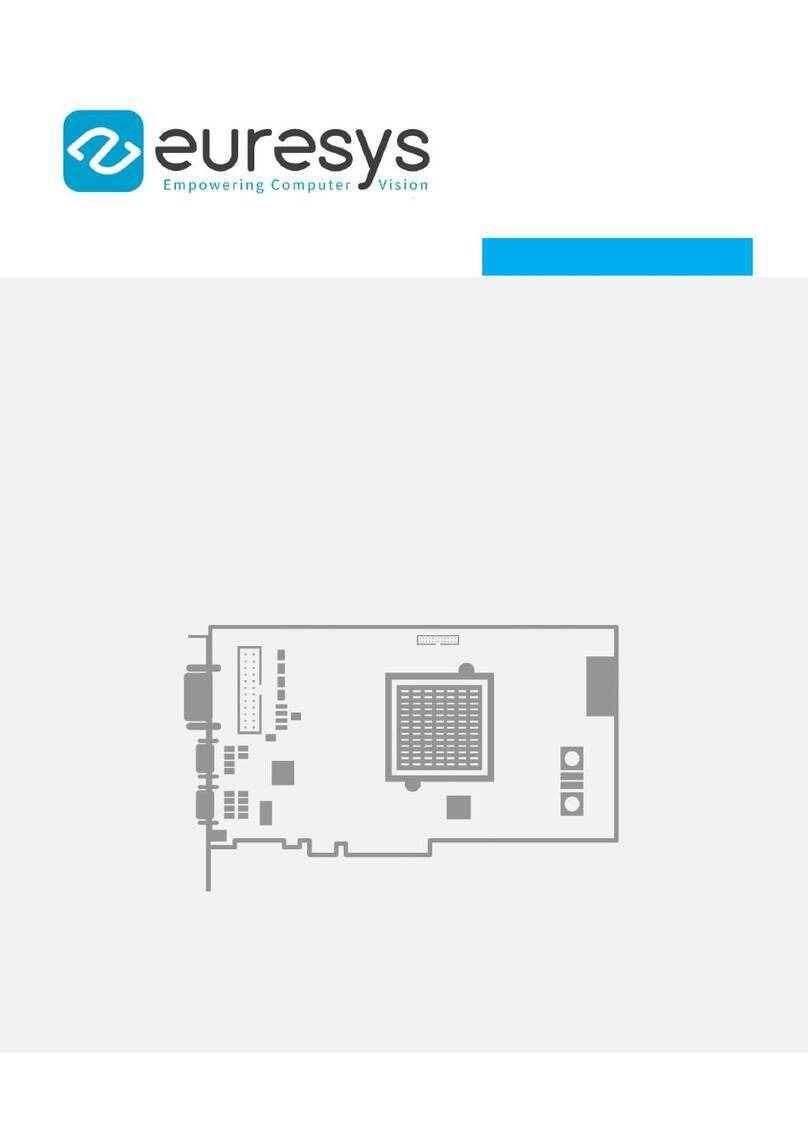
Euresys
Euresys Grablink Series User manual

Euresys
Euresys Coaxlink 1629 User manual
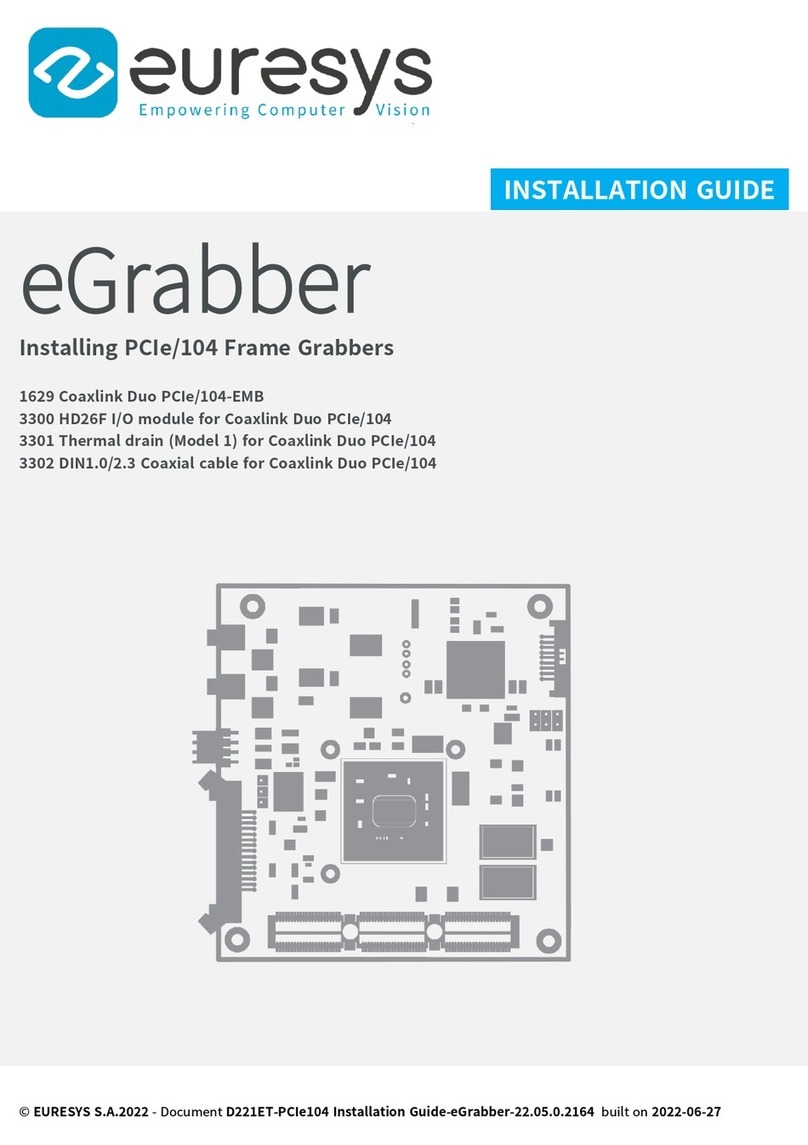
Euresys
Euresys eGrabber User manual
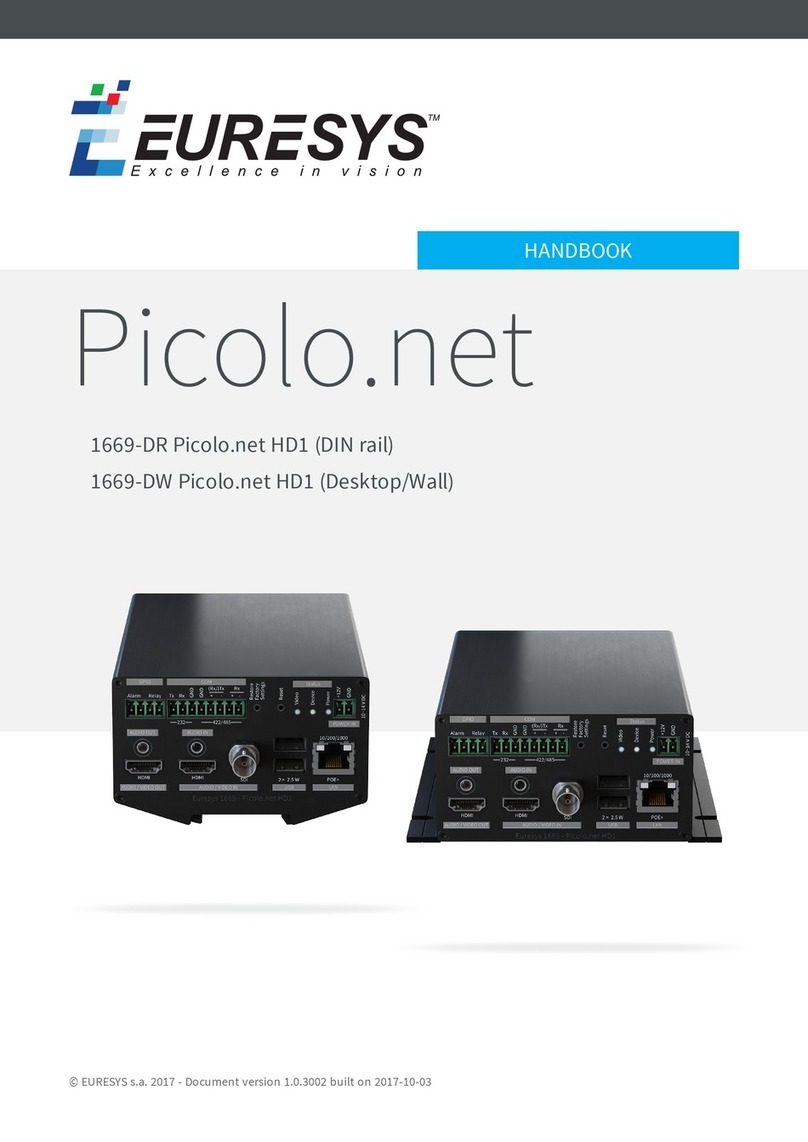
Euresys
Euresys 1669-DR Picolo.net HD1 User manual

Euresys
Euresys Coaxlink Duo PCIe/104-EMB User manual

Euresys
Euresys Coaxlink Duo PCIe/104-EMB User manual



